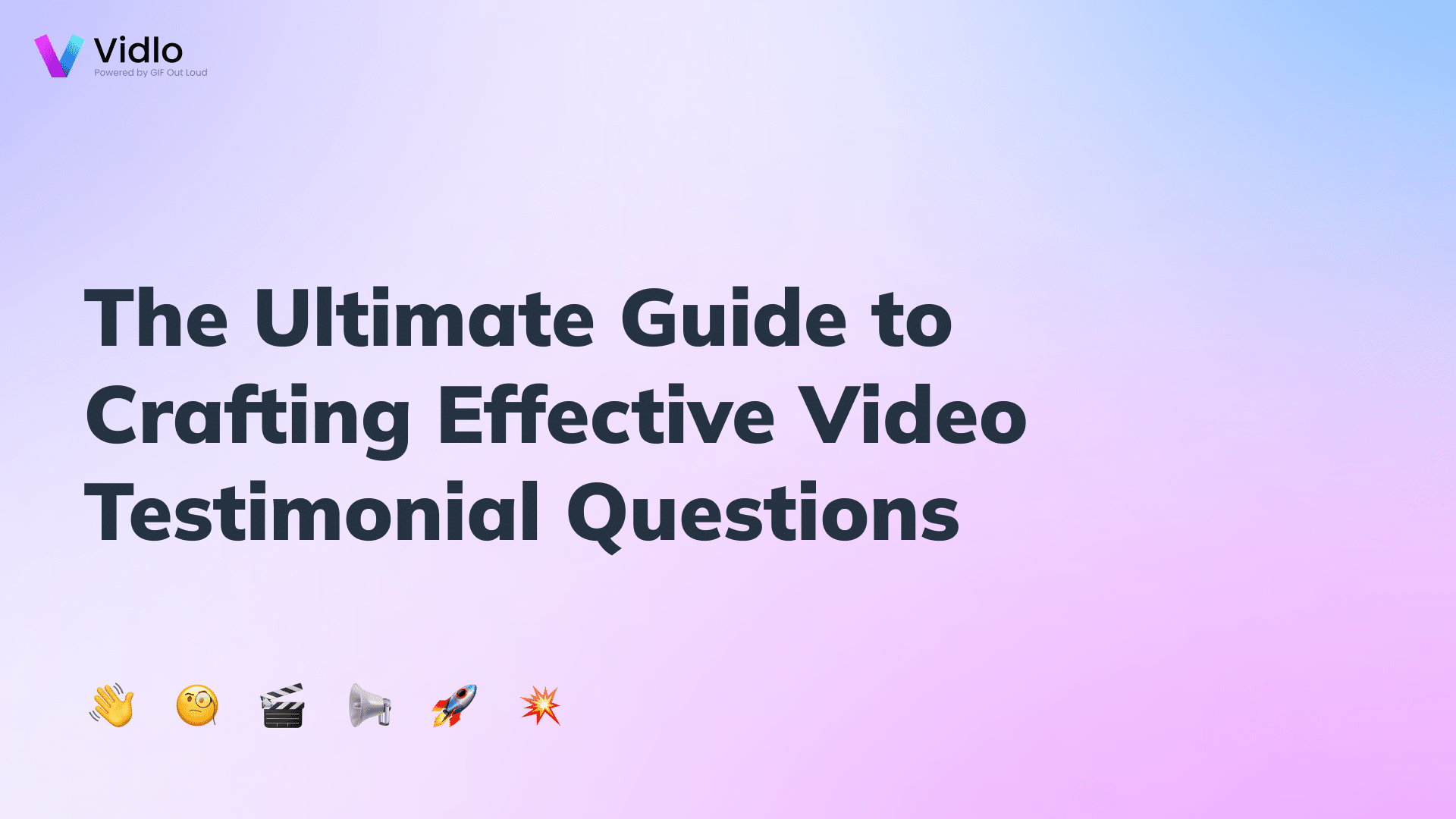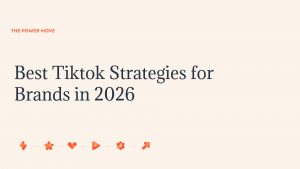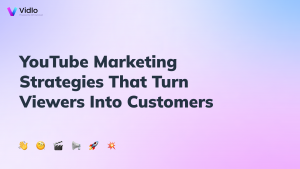Video testimonials are one of the most compelling forms of marketing. In a digital world increasingly dominated by social media, websites, and email campaigns, brands must leverage real stories from real people to build trust and drive conversions. As consumers crave authenticity, customer video testimonials have become essential for sharing positive experiences, resolving pain points, and helping potential buyers solve their problems.
This guide will walk you through how to craft effective video testimonial questions, with the help of Vidlo — a video testimonial software that makes collecting, editing, and sharing video content seamless.
In This Guide, You’ll Learn:
- Why Video Testimonials Matter
- Crafting the Perfect Video Testimonial Questions
- Background Information
- Identifying the Problem
- Exploring the Solution
- Highlighting the Benefits
- Encouraging Recommendations
- Best Practices for Collecting Video Testimonials
- How Vidlo Enhances the Video Testimonial Process
- Final Takeaways
Why Video Testimonials Matter
According to a study by Wyzowl, 89% of marketers say video gives them a good ROI, through engagement such as shares, likes and views. Also, 78% say video has directly helped increase sales. Video content drives higher engagement, improves memory retention, and provides social proof that text-based testimonials simply can’t match.
In fact, 44.7% of buyers rely on video content before making a purchase decision (source: Oberlo).
The Power of Video Testimonials:
- Visual Appeal: Videos are naturally eye-catching and evoke emotions, making powerful video testimonials more memorable than written quotes.
- Real-Life Stories: People connect with real stories. Seeing someone describe how a product or service helped them overcome a similar problem creates a strong emotional connection.
For more on this topic, check out our article on the power of testimonials.
Crafting the Perfect Video Testimonial Questions
Well-crafted video testimonial questions help extract authentic and emotionally resonant responses that build credibility. Asking open-ended, thoughtful questions makes for more engaging and shareable content.
Question Categories & Their Purposes
1. Background Information
Example: “Can you introduce yourself and tell us about your experience with our brand?”
Purpose: Establishes context and relatability.
💡 Encourage customers to reflect on their expectations or hesitations before using your product or service.
2. Identifying the Problem
Example: “What challenges were you facing before using our product/service?”
Purpose: Helps viewers recognize their own pain points in the speaker’s story.
💡 Ask for specific issues, frustrations, or blockers they faced.
3. Exploring the Solution
Example: “How did our product/service address your challenges?”
Purpose: Showcases how your offering solves real problems.
💡 Ask for a vivid “before and after” comparison — this creates emotional impact.
4. Highlighting the Benefits
Example: “What specific benefits have you experienced since using our product/service?”
Purpose: Demonstrates value and transformation.
💡 Look for measurable results: time saved, goals met, or new opportunities unlocked.
5. Encouraging Recommendations
Example: “Would you recommend our product/service to others? Why?”
Purpose: Adds social proof and trust.
💡 Dig deeper: “Who would benefit most from this?” to help identify audience fit.
Pro Tip:
Avoid yes/no questions. Instead, use prompts that invite a narrative, such as “Tell me about a time when…”
Best Practices for Collecting Video Testimonials
As mentioned in our on [asking for testimonials], how and when you ask is just as important as the question itself. But there are a couple of things you should do for best practices.
1. Maximizing Quality
Good video production doesn’t require a film crew. Focus on:
- Natural lighting or a ring light
- Clear audio (use a lavalier mic or quiet space)
- Steady framing (tripod or stable surface)
2. Minimizing Frustration
Make your customer feel at ease:
- Make it easy, by sending them a Vidlo link to record their video testimonial
- Give them very direct questions
- Remind them it doesn’t have to be perfect
- Offer a few takes without pressure
💡 One small business increased watch time on testimonials by 60% just by upgrading their lighting setup and giving clearer filming directions.
How Vidlo Enhances the Video Testimonial Process
With Vidlo’s platform, collecting and producing powerful testimonial videos becomes easier than ever, whether you’re a startup, agency, or global brand.
✨ Remote Collection
Vidlo enables you to collect videos from customers worldwide — no need for in-person shoots.
– Save on travel, time, and coordination.
✂️ Automated Editing
Skip the hassle of manual editing. Vidlo automatically:
- Adds your logo and brand elements
- Applies consistent fonts and colors
- Trims awkward pauses or errors
– Keep your content polished without hiring a video editor.
📋 Customizable Templates
Templates ensure all testimonials look sharp, stay on-brand, and feel personal.
–Tailor them by industry (e.g., healthcare, e-commerce, coaching) for maximum impact.
Ready to elevate your video marketing game? Start your first Vidlo campaign today.
Video testimonials remain one of the most persuasive tools in modern marketing. By asking the right testimonial questions, you uncover stories that speak directly to potential customers, boosting trust, increasing conversions, and enhancing brand credibility.
Remember:
Use a mix of thoughtful, open-ended questions.
Prioritize video quality and speaker comfort.
Let tools like Vidlo simplify the process so you can focus on growth.
Start crafting your next powerful video testimonial with confidence, and let real stories drive your success.




